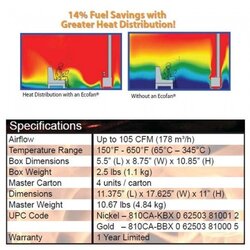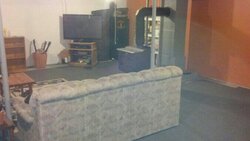I have a different view on blowers and fans.
I have never noticed any significant difference in burn times with my blower going, and I can't see how cooling the metal surface of the top of the stove would have much effect on the fire chamber area that is located below the insulated baffle. That is basically the whole idea of the baffle in modern stoves, to contain the fire in a more confined space to create higher temps and inject oxygen via the re-burn tube for a more complete burn and create extra heat that would otherwise be lost. All of that is suppose to happen in below the baffle, not above the baffle next to the metal surface of the stove.
There is no question that blowing air over the top surface cools the metal surface, but that is not where combustion is suppose to be going on. And there is no doubt that blowing air over the top surface of the stove cools the exhaust gasses, this could lead to more creosote accumulations in the flue (especially with wetter wood), but it would also lead to getting more heat out of the stove and into the house, which, after all, is kind of the goal of heating with wood. If our prime concern was getting the most efficient burn and least amount of creosote formation in our chimneys, stoves would have double insulated walls, no glass, and radiate very little heat. But that is not the goal, we are actually trying to heat our homes, and that means we are actually trying to extract as much heat as is reasonably possible from the combustion before it is lost up the chimney.
If you are not using a blower or fan on your stove to extract heat from the metal surface, then much of that heat simply going up the chimney and leaving your house, this means you are wasting wood fuel and your overall wood burning effiency goes down, not up.
Edit; I just thought of a better way to explain it. Think of the combustion chamber below the baffle as the engine in your car, the area between the surface of the stove and above the baffle as the exhaust manifold on the engine, and the chimney as the exhaust pipe. Cooling your exhaust pipe or exhaust manifold on your engine might create more carbon build up in these areas, but it's not going to have any effect or influence on the actual engine performance or running temperatures.







 Thanks for starting this post.
Thanks for starting this post.